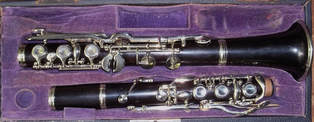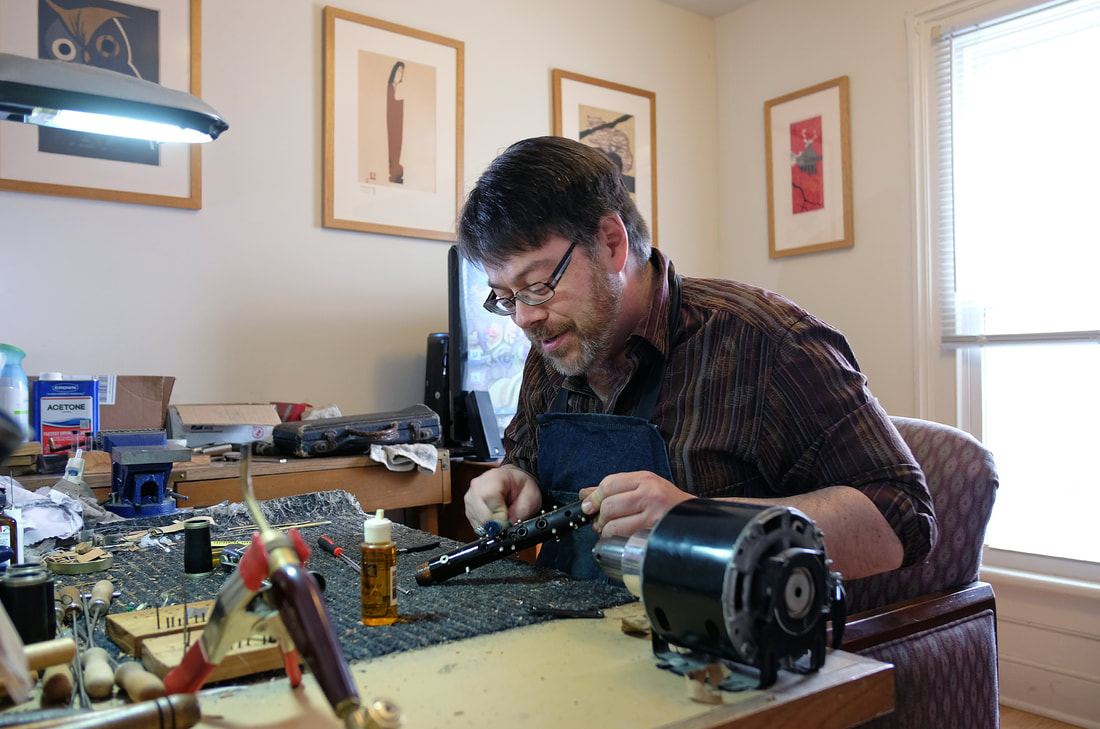 Recently, in a fit of bravery, I've been purchasing some no-name clarinets, mostly Albert systems. These golden-oldies have gotten harder to find, lately, and the big names are commanding big prices: a $1000 or more for a Buffet or Selmer in good, un-restored condition, which puts it out of my 'can-risk' range! I don't buy blind, of course: I look at wood, key-work, and condition and I ask questions. And you would be surprised at some of the nice old horns that I come across! There are a number of reasons: most no-names were made by reputable manufacturers for stores, catalogs and big distributors. If it says 'made in France' and its from the 20's-50's, chances are good that it was a Buffet, Thibouville Freres, Selmer, Couesnon, Malerne, or SML. If it was 'made in Italy', a Rampone or Orsi. If 'made in Germany', a Gebr. Moennig or one of a host of excellent (if lesser known) makers from Markneukirchen - not a bad pedigree! Also, this was the Era of the Clarinet and a poor make didn't stand much of a chance against the flood of reasonably priced, quality instruments on the market. Compare this to today's spate of First Act, Borg, and other marginal junk instruments - they wouldn't have stood a chance 80 years ago! Even some of the old French and American stencil hard rubber or metal instruments play surprisingly well, with a good overhaul and decent mouthpiece. So, don't be scared of an inexpensive old no-name for personal use. Compare key-work for similarities to known brands (hint: the shape of the lower stack bridge key is a giveaway to at least 3 makers), look for dark wood with a tight grain and pro features (like post lock-downs) and ask Ask ASK questions : are there cracks, ugly repairs, frozen/rusted keys, etc. With practice and a little luck, you can have a fine horn for practically the cost of the overhaul and save another piece of craftsmanship from the junk-pile....
1 Comment
Dennis Maher
2/10/2019 04:12:24 pm
A few years ago I bought a Paul Dujardin (made in France) Albert clarinet, with 4 rings and rollers on the pinky keys. It plays beautifully and the wood and keywork are excellent. I found online that it may have been made in the mid 1920's, and that there are a number of French brand names that are in fact homage to French artists now little known. I think I paid $125. The barrel (they are all unusual in length, depth of cuts and bore) was cracked in several places, and my tech repaired it with grenadilla dust.
Reply
Your comment will be posted after it is approved.
Leave a Reply. |
Archives
February 2024
AuthorThe Licorice Shtick Blog is the creation of the Vintage Clarinet Doctor, a Winston Salem, NC based woodwind instrument repair shop specializing in vintage and antique clarinets, saxophones, and the occasional flute. Categories |

 RSS Feed
RSS Feed